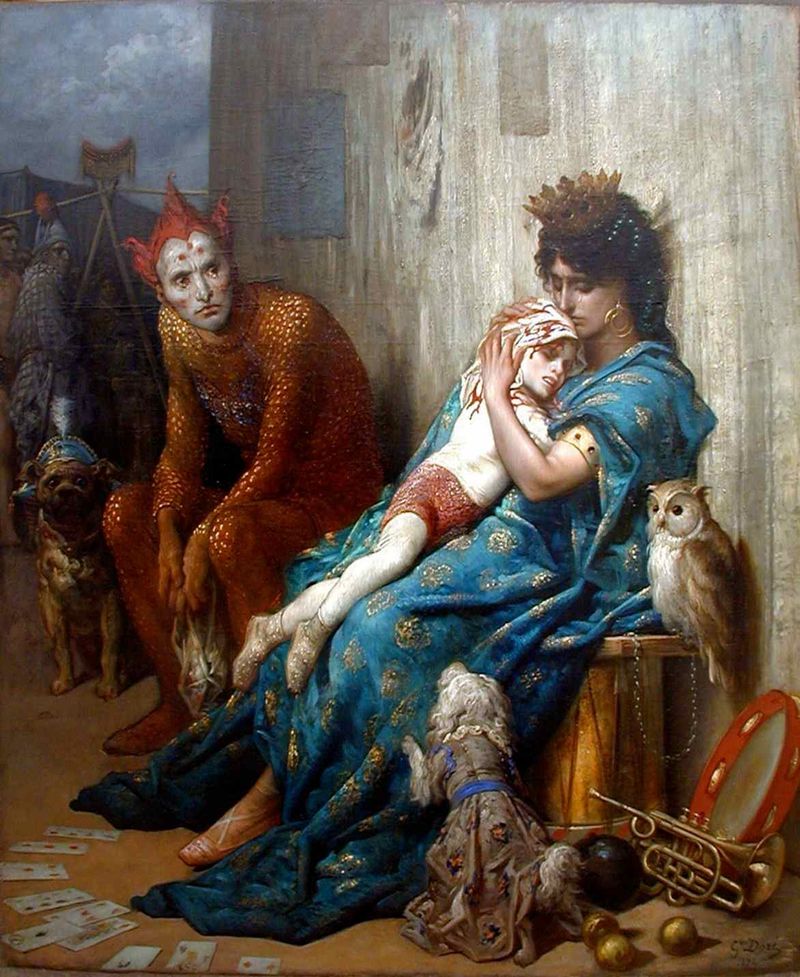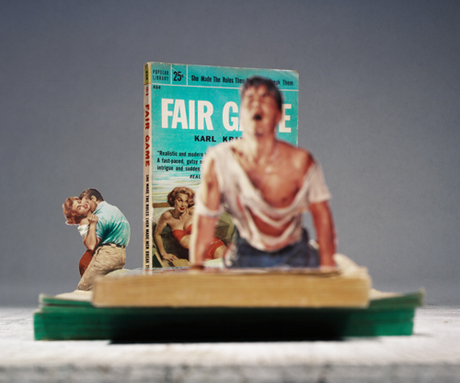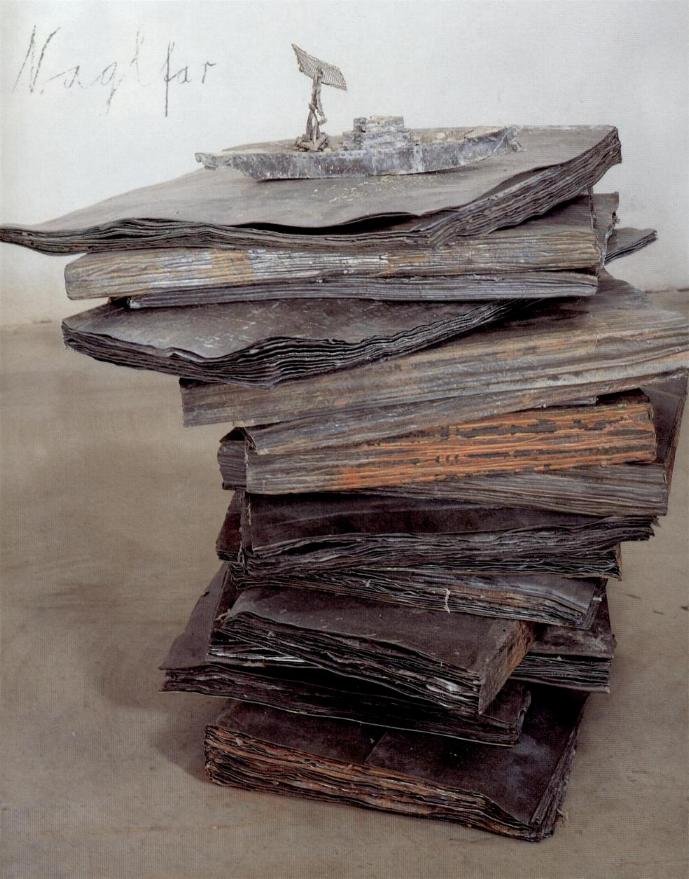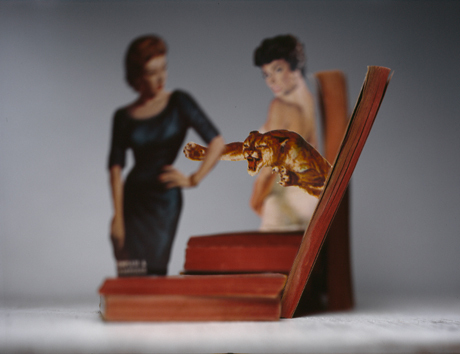Open a book open your mind, or judge a book by its cover? A glass half full or half less full? An exegis of “stuff.” How do we read an evaluate material objects? One of Walter Benjamin’s modes of scholarship was called the physiognomist, a distinction which contributed to effectively undermining traditional or normative aesthetic inquiry. Ultimately, the everyday world is then viewed in an entirely new light, with fresh eyes so to speak, one in which the previously assumed and familiar, perhaps the little big lies, now appear unfamiliar. The everyday profane world becomes in a way, “emancipated” and liberated; meaning the potential of illumination is not necessarily limited to a sacred space: mystics, the ecstatics, the desert hermits, the sanctity of designated illuminatory institutions; a porous border is opened between the sacred and profane.

---Benjamin:Of no one has less been expected, and no one has had a greater sense of well being than the man who has been able to carry on his disreputable existence in the mask of Spitzweg’s “Bookworm.” For inside him there are spirits, or at least little genii, which have seen to it that for a collector -and I mean a real collector, a collector as he ought to be – ownership is the most intimate relationship that one can have to objects. Not that they come alive in him; it is he who lives in them. So I have erected one of his dwellings, with books as the building stones, before you, and now he is going to disappear inside, as is only fitting. Read More:http://www.artslant.com/la/articles/show/23538?print=1 image:http://privatelibrary.typepad.com/the_private_library/2011/02/gustave-dor%C3%A9-and-the-private-library.html
The fourth and final type of Benjaminian scholar, the physiognomist, measures surfaces to evaluate the character of a thing. For example, a physiognomist would attempt to assess someone’s personality through their physical features. Unlike much of the Western scholastic tradition which privileges the truth within and “discards the manifest appearance”, the physiognomist is interested in the surface, the shell, the outside
boundary and shape of a thing….Read More:http://www.epoche.ucsb.edu/Beaver06.pdf
Effectively, Benjamin is testing the limits of dimensionality by wandering into the lower realms of the fourth dimension and at the same time poking individual consciousness, rising to raise it gently out of a long slumber, and perhaps avoid the option of messianic nihilism. Hard to say. But in a digital world, the book, the library is invisible, virtual, and the relationship with the object, the “magic” of the gaze, the mediation of the image is more pronounced. No real thrill of acquisition. Perhaps it is “identical” but different. Or, perhaps collecting is simply a dressed up version of the pack-rat complex, a deep seated fear of want, an obsessive compulsive disorder and a variation on the Collyer Brothers, where one is so inundated by the discarded and ruined that there is a paralysis of materialism that establishes itself.

Louis-Robert Carrier-Belleuse Read More:http://www.1st-art-gallery.com/Louis-Robert-Carrier-Belleuse/Le-Bouquiniste-%28the-Bookseller%29.html
The most profound enchantment for the collector is the locking of individual items within a magic circle in which they are fixed as the final thrill, the thrill of acquisition, passes over them . . . The period, the region, the craftsmanship, the former ownership—for a true collector the whole background of an item adds up to a magic encyclopedia. What better dialectical image of order and disorder than a magic encyclopedia: the rational bourgeois order of things known and knowable as form; the magical and stubborn resistance of those things in language— their “non-communicability”—as content. A “real library,” Benjamin argues a few pages later, “is always somewhat impenetrable” . Magic fills and overspills the space of encyclopedic order. But only a “true collector” sees this.Read More:http://www.gslis.utexas.edu/~landc/fulltext/LandC_34_2_Lewandowski.pdf
…“Seeing. One could say that the whole of life lies in seeing — if not ultimately, at least essentially. To be more is to be more united — and this sums up and is the very conclusion of the work to follow. But unity grows, and we will affirm this again, only if it is supported by an increase of consciousness, of vision. That is probably why the history of the living world can be reduced to the elaboration of ever more perfect eyes at the heart of a cosmos where it is always possible to discern more. Are not the perfection of an animal and the supremacy of the thinking being measured by the penetration and power of synthesis of their glance? To try to see more and to see better is not, therefore, just a fantasy, curiosity, or a luxury. See or perish. This is the situation imposed on every element of the universe by the mysterious gift of existence. And thus, to a higher degree, this is the human condition.”
(Pierre Teilhard de Chardin: The Human Phenomenon, trans. Sarah Appleton-Weber, p. 3)

Thomas Allan. Read More:http://www.foleygallery.com/artists/artist_ins.php3?artist=8&painting=6&ex=cur
“Human Energy presents itself to our view as the term of a vast process in which the whole mass of the universe is involved. In us, the evolution of the world towards the spirit becomes conscious. From that moment, our perfection, our interest, our salvation as elements of creation can only be to press on with this evolution with all our strength. We cannot yet understand exactly where it will lead us, but it would be absurd for us to doubt that it will lead us towards some end of supreme value. From this there finally emerges in our twentieth century human consciousness, for the first time since the awakening of life on earth, the fundamental problem of Action. No longer, as in the past, for our small selves, for our small family, our small country; but for the salvation and the success of the universe, how must we, modern men, org
e around us for the best, the maintenance, distribution and progress of human energy?”(Pierre Teilhard de Chardin: Building the Earth, “Human Energies” p. 67-68)
N.B. With thanks to Rocco Dalto for providing the quotes for PT de Chardin
ADDENDUM:
Benjamin, some fifteen years earlier in his essay “On Language as Such and on the Language of Man,” characterized as a magical “symbol of the non-communicable” . Thus in the former lies enchantment. Benjamin says very clearly that such a magical disorder is dialectically involved with order:
The most profound enchantment for the collector is the locking of individual items within a magic circle in which they are fixed as the final thrill, the thrill of acquisition, passes over them . . . The period, the region, the craftsmanship, the former ownership—for a true collector the whole background of an item adds up to a magic encyclopedia. What better dialectical image of order and disorder than a magic encyclopedia: the rational bourgeois order of things known and knowable as form; the magical and stubborn resistance of those things in language— their “non-communicability”—as content.
A “real library,” Benjamin argues a few pages later, “is always somewhat impenetrable” . Magic fills and overspills the space of encyclopedic order. But only a “true collector” sees this. Such a collector was Walter Benjamin. One can even picture Benjamin, as he himself described the collector, handling his books: “As he holds them in his hands, he seems to be seeing through them into their distant past as though inspired. So much for the magical side of the collector—his old-age image,” says Benjamin, and in so doing discloses that peculiar experience he must have undergone as an “inspired” metaphysical seer trapped in the body and life of a damaged bourgeois existence.
Second, this “old-age” image of the seer is shot through with a “childlike element” . What the collector—what Benjamin, what his work—sees in old books, tattered bindings, and frayed pages is not use value or commodities but the old and the new. Benjamin writes, “I am not exaggerating when I say that to a true collector the acquisition of an old book is its rebirth. This is the childlike element which in a collector mingles with the element of old age” Read More:http://www.gslis.utexas.edu/~landc/fulltext/LandC_34_2_Lewandowski.pdf







 COMMENTS
COMMENTS